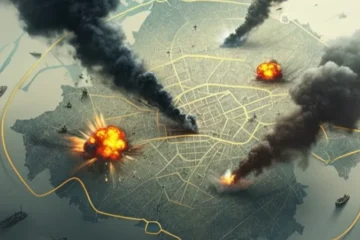January 26, 2024
In a move that has heightened tensions across Europe, Russian President Vladimir Putin’s recent visit to Kaliningrad has sparked widespread concern. This surprise trip to the Russian exclave, strategically located between Lithuania and Poland, has raised alarms about a potential future conflict involving NATO.
Putin’s journey to Kaliningrad was marked by a provocative flight path, skirting near Estonia and closely following the coastlines of Latvia and Lithuania in his presidential aircraft, known as the “Flying Kremlin”. This act was perceived as a taunt towards the Baltic nations. In response, Swedish forces deployed fighter jets off Gotland’s eastern coast as Putin crossed the Baltic Sea.
During a speech at Kant Baltic Federal University, Putin criticized neighboring countries for removing Soviet war memorials, calling it “stunning ignorance”. This rhetoric has only added to the growing unease in the region.
The Kremlin, through its spokesperson Dmitry Peskov, insists that Putin’s visit was focused on domestic development and not meant as a warning to NATO. However, the timing of this visit, in the midst of escalating Russian threats of a wider conflict with the West, cannot be overlooked.
In the UK, Prime Minister Rishi Sunak has dismissed the notion of conscription, even as military leaders express concerns about the potential necessity of civilian involvement in any conflict with Russia. German Defense Minister Boris Pistorius has also raised the possibility of a Russian declaration of war against NATO within the next five to eight years.
Camille Grand, an analyst with the European Council on Foreign Relations, interprets Putin’s visit as a multifaceted message, emphasizing Russia’s presence in the Baltic Sea and reminding the West of its military capabilities in Kaliningrad.
Against this backdrop, Baltic countries are taking steps to strengthen their defenses. Estonia, Latvia, and Lithuania have agreed to create a joint defense zone along their borders with Russia and Belarus, including the construction of defensive structures and enhanced military cooperation.
Kaliningrad, acquired by Russia from Germany after World War II, is seen as a potential flashpoint for conflict between Russia and NATO. The region has seen the deployment of advanced military assets by Moscow, including hypersonic missiles and potential nuclear-capable systems.
A critical geographical point in this escalating situation is the Suwalki Gap, a 60-mile stretch between Poland and Lithuania. If Russian forces were to move through this gap from Belarus to Kaliningrad, it could sever the Baltic states from their NATO allies in Central and Western Europe.
Putin’s trip to Kaliningrad, his first since shortly after the 2022 invasion of Ukraine, was closely monitored by NATO forces, including aircraft from the Dutch, British, and French air forces.
With tensions mounting, leaders across Europe are voicing their concerns. Lithuanian Foreign Minister Gabrielius Landsbergis has acknowledged the real possibility of war, while Germany’s Defense Minister Boris Pistorius warns of the country’s unpreparedness for such a conflict.
As the situation evolves, the international community remains vigilant, with the future of European security hanging in the balance.
This blog is part of DVC Consultants Cogitare Series and is also available as a podcast on Spotify.




0 Comments